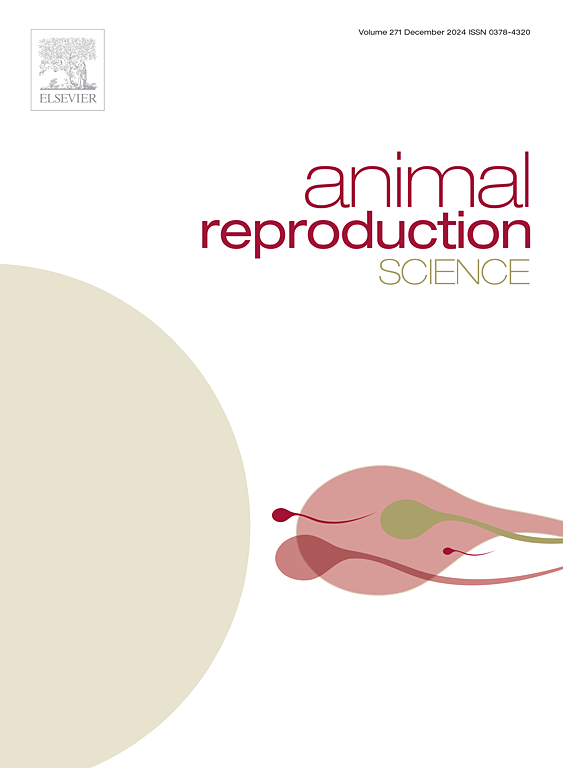日粮玉米赤霉烯酮摄入量对日本黑供牛体外胚胎生产卵母细胞质量及取卵后血清抗勒氏杆菌激素和炎症标志物水平的影响
IF 3.3
2区 农林科学
Q1 AGRICULTURE, DAIRY & ANIMAL SCIENCE
引用次数: 0
摘要
在日本黑牛(JB)中,卵母细胞收集后可移植体外受精(IVF)胚胎的数量和百分比对胚胎生产的经济成功至关重要。抗本文章由计算机程序翻译,如有差异,请以英文原文为准。
Effects of dietary zearalenone intake on oocyte quality for in vitro embryo production and on serum anti-Müllerian hormone and inflammatory marker levels, following ovum pick-up in Japanese Black donor cows
In Japanese Black (JB) cattle, the number and percentage of transferable in vitro fertilization (IVF) embryos after oocyte collection are essential for the economic success of embryo production. Anti-Müllerian hormone (AMH) is a useful predictive marker for the number of cumulus-oophorus complexes (COCs) obtained through transvaginal oocyte retrieval. We aimed to examine the relationship of AMH levels, serum amyloid A (SAA) levels, and albumin/globulin (A/G) ratios, which are inflammatory markers, and urinary zearalenone (ZEN) levels, which reflect dietary ZEN intake, with the number and quality of oocytes recovered after ovum pickup (OPU) in JB donor cows as well as the number and rate of transferable IVF embryos. Oocytes obtained after OPU were fertilized in vitro. Additionally, blood and urine samples were collected at the time of OPU to assess serum AMH and SAA levels as well as urinary ZEN levels. The number of recovered oocytes (R = 0.745, P = 0.000) and transferable embryos was positively correlated with AMH levels (R = 0.704, P = 0.000) and negatively correlated with gamma-globulin levels. Furthermore, the percentage of transferable embryos per total number of embryos was positively correlated with urinary ZEN levels (P = 0.027). In conclusion, AMH levels can inform the selection of JB donor cows for OPU. Moreover, substandard ZEN contamination of dietary feed may not affect embryo production following OPU; instead, it may result in an increased number of transferable embryos, and in turn facilitate oocyte nuclear and cytoplasmic maturation during follicle development.
求助全文
通过发布文献求助,成功后即可免费获取论文全文。
去求助
来源期刊

Animal Reproduction Science
农林科学-奶制品与动物科学
CiteScore
4.50
自引率
9.10%
发文量
136
审稿时长
54 days
期刊介绍:
Animal Reproduction Science publishes results from studies relating to reproduction and fertility in animals. This includes both fundamental research and applied studies, including management practices that increase our understanding of the biology and manipulation of reproduction. Manuscripts should go into depth in the mechanisms involved in the research reported, rather than a give a mere description of findings. The focus is on animals that are useful to humans including food- and fibre-producing; companion/recreational; captive; and endangered species including zoo animals, but excluding laboratory animals unless the results of the study provide new information that impacts the basic understanding of the biology or manipulation of reproduction.
The journal''s scope includes the study of reproductive physiology and endocrinology, reproductive cycles, natural and artificial control of reproduction, preservation and use of gametes and embryos, pregnancy and parturition, infertility and sterility, diagnostic and therapeutic techniques.
The Editorial Board of Animal Reproduction Science has decided not to publish papers in which there is an exclusive examination of the in vitro development of oocytes and embryos; however, there will be consideration of papers that include in vitro studies where the source of the oocytes and/or development of the embryos beyond the blastocyst stage is part of the experimental design.
 求助内容:
求助内容: 应助结果提醒方式:
应助结果提醒方式:


